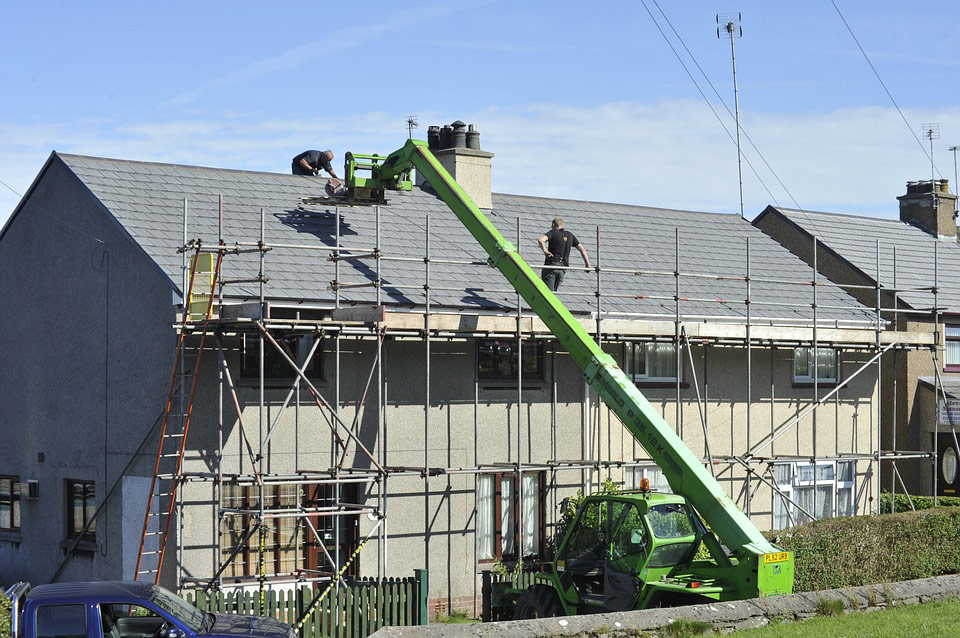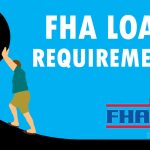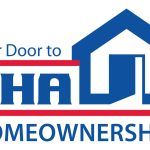Table of Contents
The VA guaranteed loan is one of the most valuable benefits that the U.S. Department of Veterans Affairs (VA) offers to eligible veterans. This guaranteed home loan comes with more benefits than a conventional loan, including no down payment and a competitive interest rate. Additionally, a veteran may use their loan to buy various types of properties, including a farm residence or an empty lot to build a home.
7 Ways To Use a VA Guaranteed Loan
- Purchase a Home or Condominium
- Build a Home on an Existing Lot
- Purchase a Lot for New Home Construction
- Refinance an Existing Home Loan
- Repair or Improve a Veteran-Owned Residence
- Simultaneously Purchase and Renovate a Home
- Purchase a Farm Residence
VA guaranteed loans are a part of a benefits package that an eligible veteran may receive after leaving the service. However, these loans are often misunderstood as being only for purchasing a home. In fact, veterans can use the VA guaranteed loan program to buy their first home, purchase land to build a home, refinance their home, or repair or renovate a home.
Still, some situations do not allow the use of a VA home loan. For example, some combined business and residential properties and newly-constructed or purchased investment properties won’t be eligible. A VA borrower must ensure that their property meets the mortgage loan eligibility requirements set by the VA guaranteed loan program before applying.
What Is a VA Guaranteed Loan?
The VA offers a few different types of home loan programs for veterans to use for specific situations as part of a suite of veterans benefits. VA guaranteed loans are among the most used types, allowing veterans to purchase, refinance, or renovate a home with perks that traditional loans don’t have. A VA guaranteed home loan includes benefits like a lower interest rate, simple qualification, and zero down payments.
The VA loan program does not provide funds to a borrower for their home. Instead, it guarantees a purchase loan with a private lender. The veteran borrower will still need to go through an approval process to determine their eligibility and borrowing power, but their status as a former service member with a VA home loan benefit can speed up and streamline the process.
Unlike traditional loans, the VA guaranteed loan does not require private mortgage insurance (PMI), which adds extra costs to a borrower’s monthly payment. However, the VA adds its own form of PMI, known as the VA funding fee, which decreases as a veteran puts more money down on their home.
Veterans interested in applying for a VA guaranteed loan must first receive a Certificate of Eligibility (COE). This document proves that a veteran is eligible to apply for a VA home loan based on meeting the minimum service requirements for the VA benefit.
What Is the Maximum Limit of a VA Guaranteed Loan?
When determining how much you can borrow with a VA guaranteed loan, you need to consider loan entitlements. A VA loan entitlement is the maximum amount of the loan that the VA will guarantee paying back to the lender. The VA grants veterans either full entitlement or remaining entitlement.
Full entitlement is for veterans who have never used their VA home loan benefit before, have fully paid off any previous VA home loan, or have sold the property the loan covered. Veterans with full entitlement do not have a VA loan limit on how much they can borrow with a VA guaranteed loan. The VA will guarantee your lender up to 25% of the loan amount, regardless of how much it is. So, if you have a $400,000 loan, the VA guarantees up to $100,000 if you default on that loan.
Remaining entitlement is for veterans who already have a VA home loan in use in some way, whether they’re paying one back or they refinanced their VA loan. These veterans do have a loan limit, which is based on the Federal Housing Finance Agency’s (FHFA) conforming loan limits for your county and how much of your loan entitlement you’ve used. The VA guarantees up to 25% of the conforming loan limit minus your used loan entitlement in these situations.
7 Ways To Use a VA Guaranteed Loan
Veterans can use their VA guaranteed loan benefit in one of the following seven ways.
1. Purchase a Home or Condominium
Most commonly, a veteran uses the VA guaranteed loan to buy a home to use as their primary residence. However, veterans may also use the funds to purchase a condominium that fits within the VA’s eligibility guidelines. Additionally, the funds can be used to purchase the lot on which the home sits, if necessary, as well as the home.
Before a loan gets approved, the VA will order an appraisal to determine whether it’s in a safe and sanitary condition. This appraisal does not replace a traditional inspection. Instead, it helps the VA ensure that its loan guarantee is worthwhile and meets the VA loan eligibility criteria.
2. Build a Home on an Existing Lot
Veterans who prefer to build a home may use their VA home loan for construction on their own lot. However, a few stipulations exist. First, the builder must be registered through the VA with a valid builder identification number. In most cases, the builder will also need to provide a home warranty for the build to the VA.
The VA also requires a new build to have an appraisal, just as it would if a veteran purchased an existing home. The builder will need to meet local VA requirements for a build, which varies by state.
3. Purchase a Lot for New Home Construction
Veterans who do not already own a lot for a new home construction may use the VA guaranteed loan to buy a lot and complete a new build. However, these two purchases must happen simultaneously with the loan rather than using the funds to buy a lot now and construct a home later.
Also, the VA outlines a few rules for these purchases, including that the land must not be in a flood zone or within areas that are prone to natural disasters. Veterans using their funds for a lot purchase and new construction must also build no more than four units on the property and use one of them as their primary residence.
4. Refinance an Existing Home Loan
Sometimes, refinancing a home loan can save a homeowner money by paying lower interest rates. In some cases, homeowners can cut several years off the life of their loan by refinancing. The VA allows veterans to refinance a VA guaranteed loan to lower their interest rate. In turn, veterans may be eligible for a shorter loan or lower monthly mortgage payments.
This is not the same as the VA cash-out refinance loan, which allows veterans to refinance their mortgage and trade-in equity on their home for cash, which they can use to pay off other debts or improve their home.
5. Repair or Improve a Veteran-Owned Residence

One benefit of veteran home loans is that the homeowner can use their funds to repair or improve their home. Some of the ways veterans may use their home loan funds in this way include:
- Making necessary adaptations to the home to accommodate a person with a disability
- Improving the home’s energy consumption by adding solar panels or upgrading the heating and cooling system
- Repairing run-down and potentially unsafe parts of the home, like the foundation or roof
- Replacing siding and windows
- Treating mold, insect infestations, and other things that could damage the home
6. Simultaneously Purchase and Renovate a Home
Veterans might prefer to purchase a fixer-upper home to renovate. The VA allows this as an option with the VA guaranteed loan. With this type of loan, the veteran borrows the amount they’ll need for the home plus renovations. Therefore, the loan approval process may take a bit longer, as the veteran will likely need to get a few estimates from builders to project the costs for the lender.
When veterans use their home loan funds in this way, they’re still entitled to the same benefits as those purchasing a ready-to-move-into home, including no private mortgage insurance and a $0 down payment.
7. Purchase a Farm Residence
Veterans may use a VA guaranteed loan to purchase farmland with a home that will become their permanent residence. Like in other situations, the veteran may not use their loan funds to buy a business property. Therefore, some farmland properties will not be eligible for the loan.
However, income generated on the farm can go toward mortgage payments. To qualify, the veteran must be able to prove that they have farming experience and can sustain farming operations. The property’s value will not include any farm equipment, livestock, supplies, or other items that come along with it. Additionally, any farmland purchased with a home will be appraised only at its residential value.
What the VA Guaranty Doesn’t Cover
The VA guaranteed loan can make it easier for veterans to buy or build a home. However, the loan isn’t guaranteed in the sense you might think. Veterans do not automatically become eligible for a loan because they’re veterans. Instead, they must go through the application process with a mortgage lender to qualify for their loan.
The VA also won’t back loans that don’t meet its eligibility guidelines. In many cases, a veteran cannot get money back from their loan unless they’re refinancing an existing VA loan. The VA also won’t guarantee loans for investment properties, combined residential and investment properties, or land that’s not part of a construction loan.
VA home loans will not cover more than the purchase price or appraised value – whichever is lesser – of a home. However, veterans can roll the VA funding fee into their loan, if desired.
Your Guide to the VA Guaranteed Loan
The VA guaranteed loan is an exceptional benefit for veterans to get an affordable mortgage payment for their new home purchase. With no down payment requirements and lowered risk for lenders thanks to VA backing, this loan is helpful for veterans that may not qualify for traditional loans due to their credit score or higher interest rates.
VA loan limits vary by location, so you’ll need to check with your local VA office to determine how much you can borrow. Once you find a lender, you’ll need to apply for a Certificate of Eligibility on VA.gov or by mailing VA Form 26-1880 to prove to your lender that you’re eligible for one. Once confirmed, your mortgage lender will walk you through the next steps with the VA to schedule your appraisal and get your purchase approved.
If you run into any problems or have questions throughout the loan process, you can contact your VA regional office for assistance.






